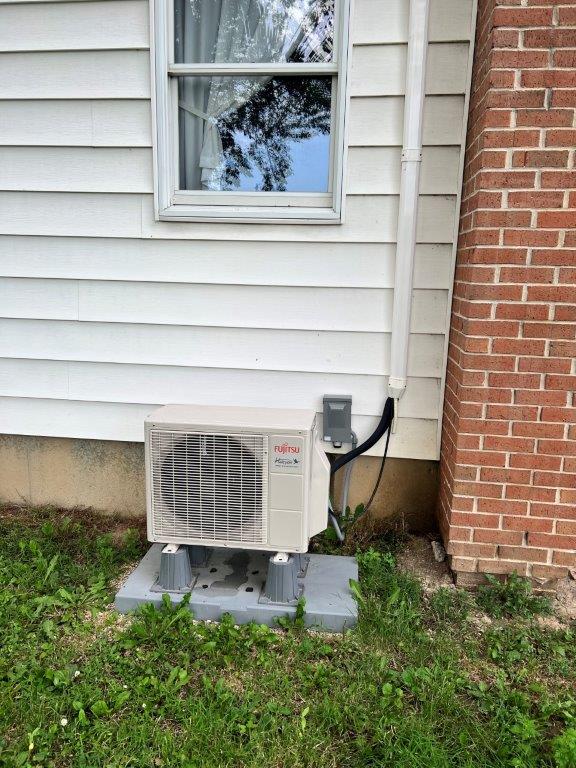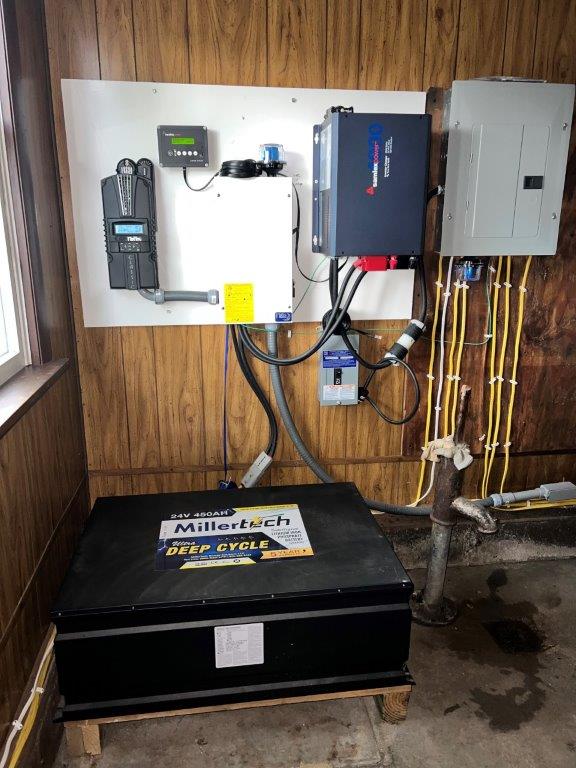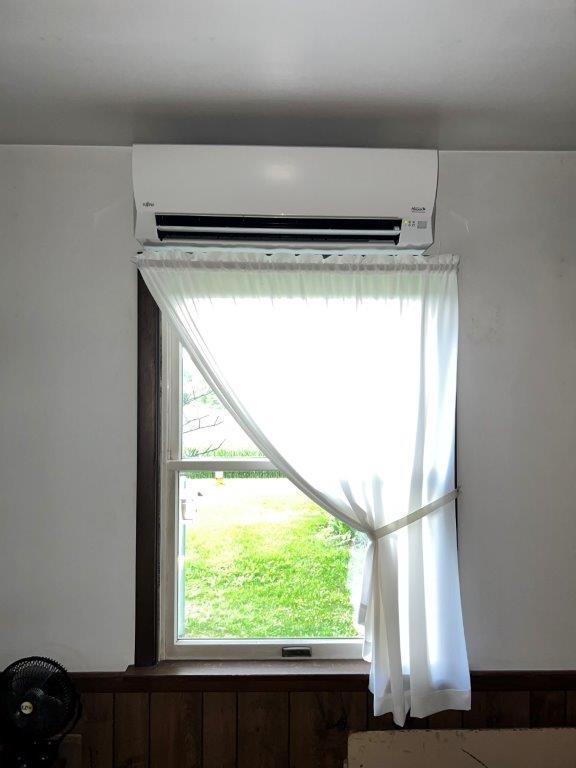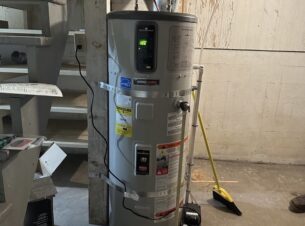As inverter-driven mini-split technology gains HVAC market share by roughly 30 percent each year, it’s being embraced in even the unlikeliest of places.
Eastern Indiana is home to a growing Amish community, where members are drawn to the rural surroundings and the opportunity to continue the farming lifestyle that they’re known for. Sticking close to the land, however, doesn’t necessarily mean being uncomfortable or utilizing old technology. At least not anymore.
One Amish couple found a creative way to ease the rigors of harsh Indiana weather: humid summers and severe winter conditions.

Tom and Laura Neuenschwander, owners of Cardinal Air and Mechanical, in Linn Grove, IN.
Tom Neuenschwander, owner of Cardinal Air and Mechanical, in Linn Grove, IN, received an inquiry this past spring about replacing a window air conditioning unit with a mini-split at an Amish farm. AC was priority, but the homeowner also wanted to use the system as a source of heat. The most interesting facet of the conversation was that the home is entirely off-grid, using an existing 12 kWh photovoltaic solar array and 24V, 450 AH battery bank as its sole source of electric power.
Neuenschwander founded Cardinal Air in early 2020, and has already grown the full-service mechanical company to seven employees. Having worked in the HVAC field since he graduated high school, he knew that mini-split installations would provide an area of rapid growth, and has made ductless systems a focus since the beginning.
“We buy Fujitsu mini-spits through Chris Smith at Plumbers Supply Company in Fort Wayne,” said Neuenschwander. “He helped us find the right size Halcyon unit for this application, given the unique nature of the power supply.”

Cardinal Air and Mechanical installed a 9,000 BTUH mini-split heat pump at the off-grid residence to replace the window unit that was being used for air conditioning.
The two-story, 2,000-square-foot home was originally heated by a coal stove and cooled, partially, by a 6,000 BTU window air conditioner. A larger or second window unit couldn’t be used because the solar array and battery bank isn’t sufficient to handle a bigger load. The owners wanted to learn if they could improve their cooling performance with a mini-split, without the need to increase solar capacity.
“We had to size the mini-split to the source of power, not to the cooling load of the home,” said Neuenschwander. “In addition to the window unit, the small solar array powers a freezer, refrigerator, and a few lights. Domestic hot water is produced by a propane-fired tank.”
“Our biggest consideration was wattage draw,” he explained. When we looked at the Fujitsu specs, we found that peak draw from a 9,000 BTU Halcyon system on start-up is about 1,300 watts. The same system idles at 300-400 watts, with high draws around 600 watts. The battery bank could supply enough power to cover a 9,000 BTU unit, but not a 12,000 BTU system.”

Power from the solar array is stored by a 450 AH battery bank, the sole source of power to the home.
When Cardinal Air purchased the system, they ordered a 115v model to match the transformer on the farm. Otherwise, the installation was quite ordinary. Cardinal Air standardized on Fujitsu as their brand of choice due to ease and simplicity of installation.
After having the unit in operation through all of summer 2022, the owners reported that the new mini-split cools the entire downstairs, instead of the one large room that the window unit used to serve. Beyond that, the mini-split uses substantially less power than the window unit, despite its 34 percent greater capacity. This becomes evident when numerous, consecutive cloudy days prevent good solar harvest.
“The homeowners reported that the mini-split now runs non-stop, whereas the window unit would deplete the battery bank after a day or two of cloudy weather,” said Neuenschwander. “It’s energy efficient enough at idle that it barely places a draw on the batteries. They’re cooling about 600 square feet with it. The only downstairs room that doesn’t quite stay at temperature is the kitchen, due to the floorplan. The humidity is gone, though. Oh, and the unit is a lot quieter than the window unit.”
“Because the system is sized to the power supply and not the heat load of the home, the owners know they’ll need supplementary heat,” continued Neuenschwander. “At this point, they just don’t know at what outdoor ambient temperature that will occur. So far, they say that the mini-split sure beats starting a fire in the stove to knock out the shoulder season chill.”

The indoor unit now cools the entire downstairs and uses substantially less power than the window unit, despite its 34 percent greater capacity.
The owners have no plans to expand the solar array, but are considering expanding the battery bank and potentially installing a Fujitsu unit upstairs. For now, they’re thrilled with the comfort improvements and energy savings they’ve made to their off-grid residence.




Join the conversation: